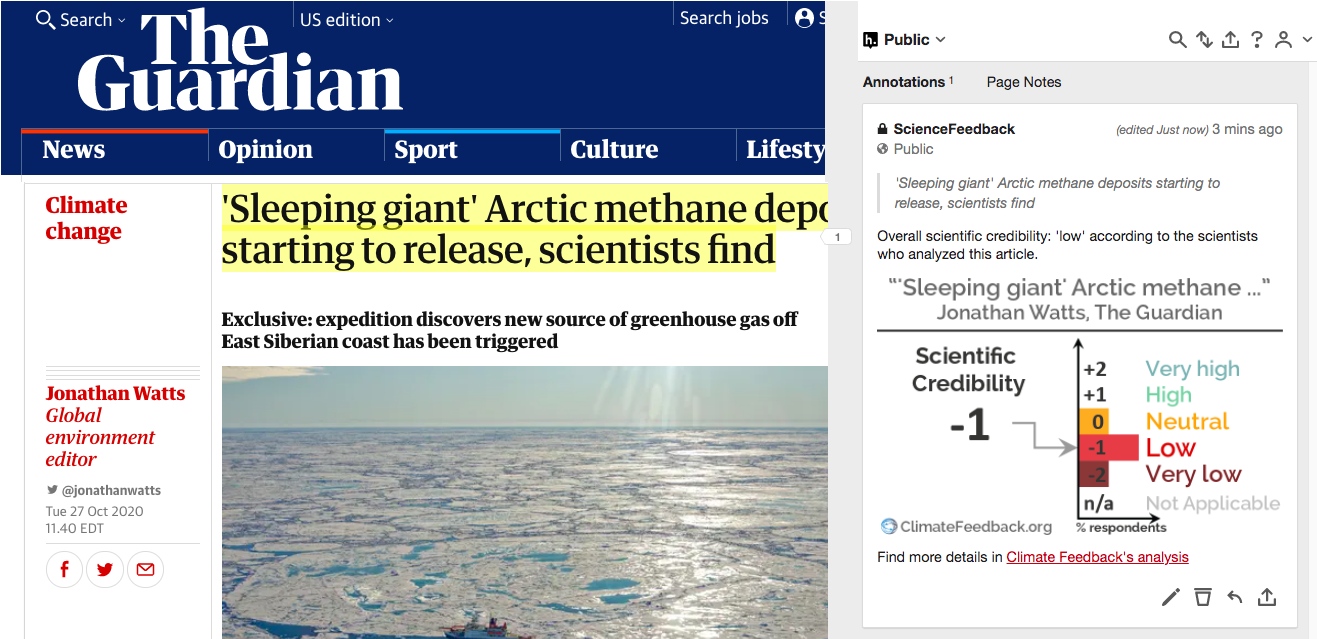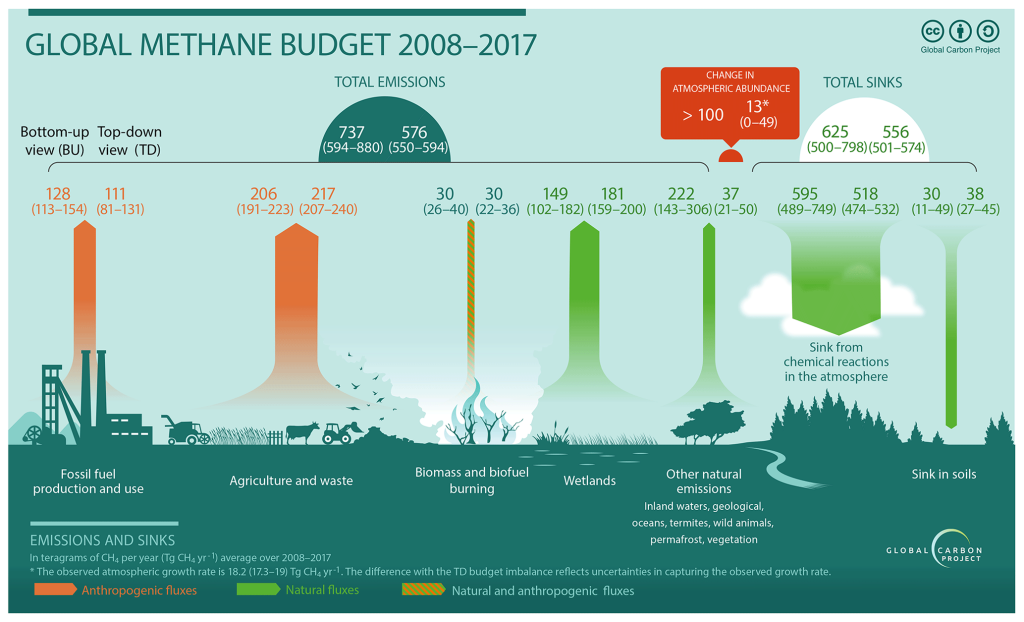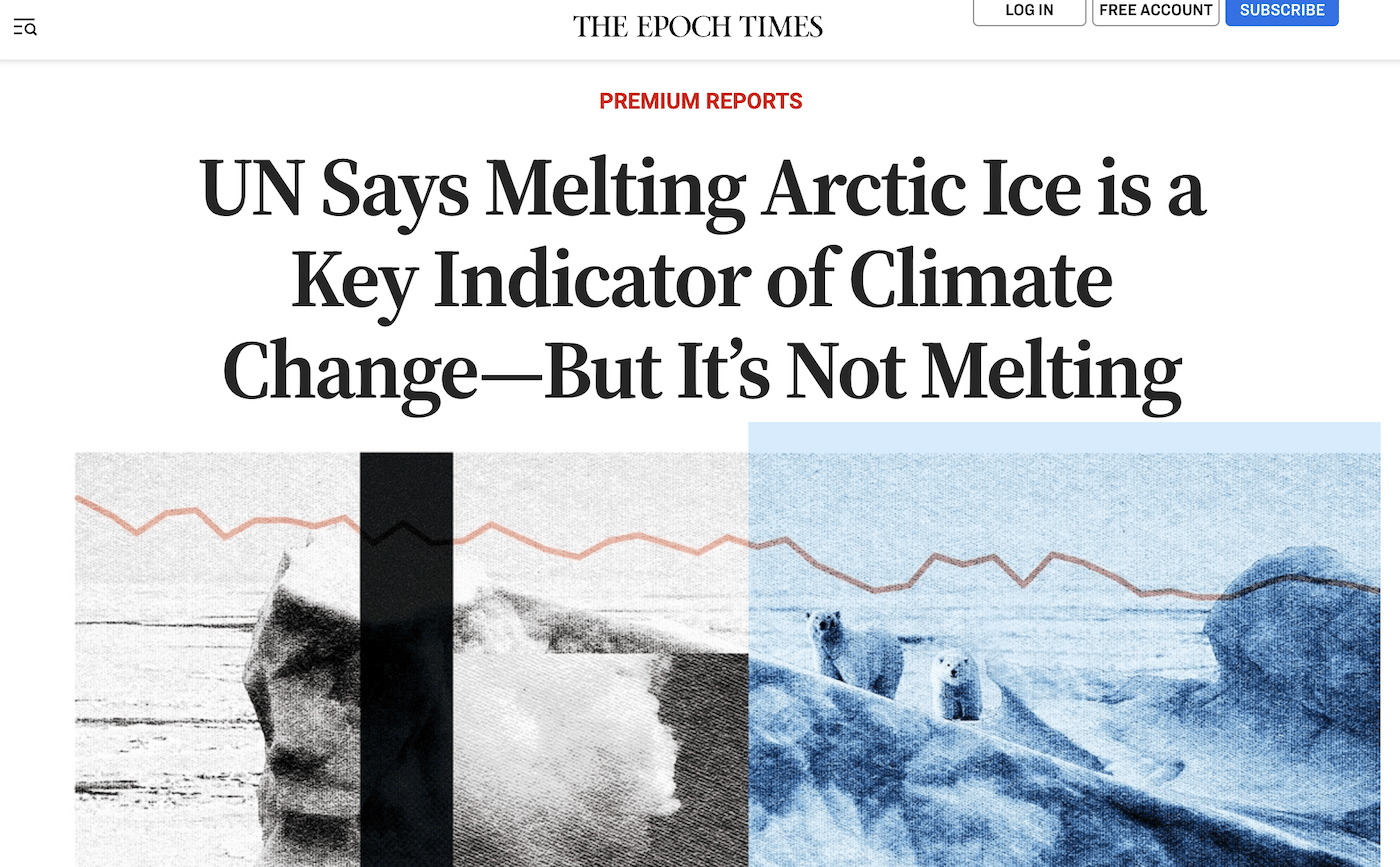- Climate
Guardian article on Arctic methane emissions claiming “a new climate feedback loop may have been triggered” lacks important context
Reviewed content

Headline: "'Sleeping giant' Arctic methane deposits starting to release, scientists find"
Published in The Guardian, by Jonathan Watts, on 2020-10-27.

Summary
This article “‘Sleeping giant’ Arctic methane deposits starting to release, scientists find” was published in The Guardian in October 2020, and has received more than 150,000 interactions on social media, according to CrowdTangle. The article is based on interviews with scientists aboard a research vessel in the Arctic, but their research is preliminary and has not been published.
Scientists who reviewed the article explained that it presents some sensational claims and lacks important context. It is not known whether the methane released from the seafloor in this location of the Laptev Sea represents a new or changing release, contrary to the article’s claim, “concern among researchers that a new climate feedback loop may have been triggered that could accelerate the pace of global heating.” It is also not known how much of that methane is reaching the atmosphere, as methane is often dissolved in the seawater and oxidized in these deep settings[1].
In some ocean regions where temperature and pressure conditions allow, methane produced by the slow decay of organic matter in seafloor sediments can be trapped in icy deposits called “methane hydrates”. Such deposits can release localized plumes of methane gas bubbles, which have been observed in a number of locations, including the Laptev Sea. Methane hydrates are a focus of careful study due to concerns that they could thaw in warming waters, leading to an increasing release of carbon into the atmosphere that could contribute to additional global warming.
Many sites of methane plumes are only newly discovered and lack long-term measurements, which makes it difficult to determine whether they are increasing. Dating techniques applied to some plumes near Svalbard, however, revealed that they are several thousand years old[2]. Sources of methane emissions cannot be assumed to be new simply because they are being observed for the first time.
One method for evaluating trends in these methane seeps is to study global methane emissions and estimate the various sources. This work has shown that, through 2017, Arctic methane emissions do not appear to have increased over the past two decades[3,4], meaning these seeps are not currently having a significant impact on climate change. The largest human-caused emissions of methane come from agriculture, waste management, and fossil fuels, while natural methane emissions are dominated by wetlands (see figure below).

Source: Global Carbon Project/Saunois et al. (2020)
The Guardian article notes that this data is preliminary and the work has not yet been submitted for peer review. One of the scientists involved is also quoted explaining that, “At this moment, there is unlikely to be any major impact on global warming.” But the article also emphasizes the claim that “the discovery of potentially destabilised slope frozen methane raises concerns that a new tipping point has been reached that could increase the speed of global heating.”
Additional context would help readers better understand the significance of the reported methane observations and their relationship to climate change.
UPDATE (23 Nov. 2020): The Guardian article has been updated and carries this correction note: “This article was amended on 4 and 17 November 2020 to further emphasise the preliminary nature and context of the findings, and to attribute concerns about the possible consequences of the observations. The reference to a tipping point was revised to better convey the nature of this concern.“
See all the scientists’ annotations in context. You can also install the Hypothesis browser extension to read the scientists’ annotations in context.
Reviewers’ Overall Feedback
These comments are the overall assessment of scientists on the article, they are substantiated by their knowledge in the field and by the content of the analysis in the annotations on the article.

Associate Professor, Lund University & University of Oslo
This article’s claim that methane deposits in the Arctic Ocean are starting to be released, awakening a “sleeping giant”, cannot be supported by the limited observational data. Besides, even if these newly found seeps are increasing, they are located too deep in the ocean to have a significant impact on the concentration of methane in the atmosphere.
First of all, a newly discovered source is not the same as a changing source. Second, these findings are not unexpected nor the first of their kind in the Arctic. Gas hydrates are commonly found along continental slopes at depths where high pressures and low temperatures allow for their existence. The presence of hydrates to the west of high-arctic Svalbard is well-known[5]. These hydrates have been studied extensively and occur at a similar depth as the recent findings reported by the Guardian. This makes for an ideal comparison to understand what’s going on in the Laptev Sea.
The gas hydrates near Svalbard have been venting methane for at least 3,000 years, induced by geological processes rather than global warming[2], while methane release varies with the seasons[6]. Similar processes may be at play for the gas hydrate deposits found in the Laptev Sea. This underlines the need to monitor methane seeps over a long time period before rushing to the conclusion that they are increasing due to recent climate change. Model studies show that the impact of climate change on gas hydrates will be a slow process, over timescales from centuries up to a millennium[7,8].
Most importantly, the ocean is an efficient filter for methane when the water is more than 100 m deep[1]. When bubbles rise up towards the surface, methane quickly dissolves into the ocean water and is removed through oxidation[1,9]. Since the hydrates near Svalbard and in the Laptev Sea are located below a depth of 300 m, they are unlikely to influence atmospheric concentrations—even when they start to destabilize. Although the article in the Guardian acknowledges that most methane dissolved into the ocean water, the researchers also report that “methane levels at the surface were four to eight times what would normally be expected and this was venting into the atmosphere”. Elevated methane levels are not uncommon in the ocean, also near Svalbard[9]. More than a thousand gas seeps have been documented along the coast of Svalbard[10] (just six were reported by the recent expedition in the Laptev Sea). Despite the widespread release of methane into the ocean off the coast of Svalbard and extensive monitoring with land-based, ship-based and airborne methods, no significant impact on the atmosphere has been found[11]. In fact, the small amount of methane that is released at hotspots is offset by an enhanced uptake of CO2 in the same area[12].
It should be noted that the researchers interviewed by the Guardian have previously suggested very high emissions from the shallower parts of the Laptev Sea and nearby seas[13], where methane can escape to the atmosphere in larger quantities. However, three independent studies that tried to confirm those results showed that those estimates were overestimated by about a factor of five[14,15,16]. While high methane concentrations have been detected near seeps in the Laptev Sea[17], these elevated concentrations are highly localized, which makes them less important at the regional scale[14].
The article in the Guardian grossly exaggerates a small source that is unlikely to increase, while using frightening metaphors of the awakening of a “sleeping giant”. This draws attention away from genuine feedbacks in the Earth system such as the release of carbon from permafrost thaw, the deterioration of global ecosystems, and the rapid loss of sea ice. Anthropogenic methane emissions are roughly 50 to 70 times larger than emissions from the Arctic Ocean, and we can compensate for Arctic methane release by reducing anthropogenic emissions with present-day technology[18]. That’s the real giant that we can and should tackle, rather than hypothetical sea monsters.

Research Scientist, NASA
The article claims that frozen methane, stored in ocean sediments in the Arctic, has become destabilized and is being emitted to the atmosphere. The article generally overlooks the fact that 1) the methane emitted from the sediments does not escape to the atmosphere because it is oxidized in the water column, 2) the methane fluxes the research crew are measuring have been detected in previous cruises and are not an indicator of a rapid change, and 3) this work has been disputed previously through independent studies using atmospheric, or top-down, constraints to measure the Arctic methane budget.

Senior Scientist, Alfred Wegener Institute
The words “starting” and “triggering” tacitly assume that the beginning of a process was observed (i.e., that has not taken place until now). The article provides no evidence to support this assumption. “Triggering” connotes a small impulse leading to an explosive result—this word choice is not neutral, but highly suggestive.
The article then softens the claim of a new release/source relevant to climate: “…most of the bubbles were currently dissolving…”, “…findings were preliminary” and “…will not be confirmed until they return”.
The article then goes on to contradict the assumption of “starting”: methane emissions have been observed before (“the third source of methane emissions from the region”, “previously reported the gas is being released”, “second year in a row”). No differentiation is provided between previous and current observations.
Important context is omitted: such methane emissions are observed at many locations on Arctic slopes and could be expected at this location. Currently, Arctic methane sources are a small contribution to atmospheric methane. The source of the methane observed in this story is of central importance in judging whether it is sensitive to climate change or likely to be large enough to affect climate. Only one mention of the source is made: “gas hydrate”, without any background.
This is a very understudied part of a region that is most strongly affected by climate change. It is tremendously challenging for science to fund research and every new observation is of value and should be analyzed thoroughly and soberly, in context.

Professor, University of Chicago
Putting these new methane emissions into a global context, they are much smaller than emissions fluxes from tropical wetlands, the main natural source. This means that unless Arctic methane fluxes blow up by a factor of 100 or more, they won’t play a huge role in global warming. I was relieved by the first quote in the article, beginning “At this moment, there is unlikely to be any major impact on global warming…,” but I was less happy with a later quote, “Potentially they can have serious climate consequences, but we need more study before we can confirm that.”
REFERENCES
- 1-McGinnis et al. (2006) Fate of rising methane bubbles in stratified waters: How much methane reaches the atmosphere?, Journal of Geophysical Research: Oceans
- 2-Wallmann et al. (2018) Gas hydrate dissociation off Svalbard induced by isostatic rebound rather than global warming, Nature Communications
- 3-Saunois et al. (2020) The Global Methane Budget 2000–2017, Earth System Science Data
- 4-Jackson et al. (2020) Increasing anthropogenic methane emissions arise equally from agricultural and fossil fuel sources, Environmental Research Letters
- 5-Westbrook et al. (2009) Escape of methane gas from the seabed along the West Spitsbergen continental margin, Geophysical Research Letters
- 6-Berndt et al. (2014) Temporal Constraints on Hydrate-Controlled Methane Seepage off Svalbard, Science
- 7-Kretschmer, et al. (2015) Modeling the fate of methane hydrates under global warming, Global Biogeochemical Cycles
- 8-Archer (2015) A model of the methane cycle, permafrost, and hydrology of the Siberian continental margin, Biogeosciences
- 9-Steinle et al. (2015) Water column methanotrophy controlled by a rapid oceanographic switch, Nature Geoscience
- 10-Mau et al. (2017) Widespread methane seepage along the continental margin off Svalbard – from Bjørnøya to Kongsfjorden, Scientific Reports
- 11-Lund Myhre et al. (2016) Extensive release of methane from Arctic seabed west of Svalbard during summer 2014 does not influence the atmosphere, Geophysical Research Letters
- 12-Pohlman et al. (2017) Enhanced CO2 uptake at a shallow Arctic Ocean seep field overwhelms the positive warming potential of emitted methane, PNAS
- 13-Shakhova et al. (2014) Ebullition and storm-induced methane release from the East Siberian Arctic Shelf, Nature Geoscience
- 14-Thornton et al. (2020) Shipborne eddy covariance observations of methane fluxes constrain Arctic sea emissions, Science Advances
- 15-Berchet et al. (2016) Atmospheric constraints on the methane emissions from the East Siberian Shelf, Atmospheric Chemistry and Physics
- 16-Tohjima et al. (2020) Estimation of CH4 emissions from the East Siberian Arctic Shelf based on atmospheric observations aboard the R/V Mirai during fall cruises from 2012 to 2017, Polar Science
- 17-Thornton, et al. (2016) Methane fluxes from the sea to the atmosphere across the Siberian shelf seas, Geophysical Research Letters
- 18-Christensen et al. (2019) Tracing the climate signal: mitigation of anthropogenic methane emissions can outweigh a large Arctic natural emission increase, Scientific Reports



